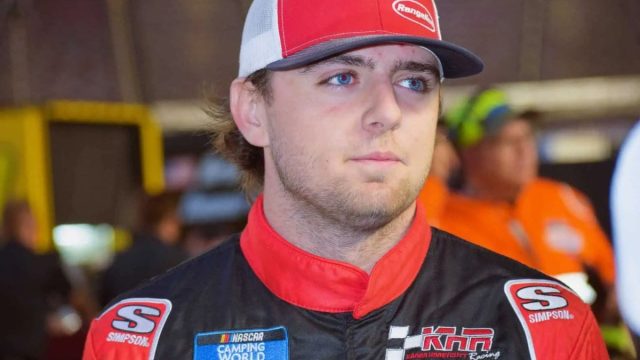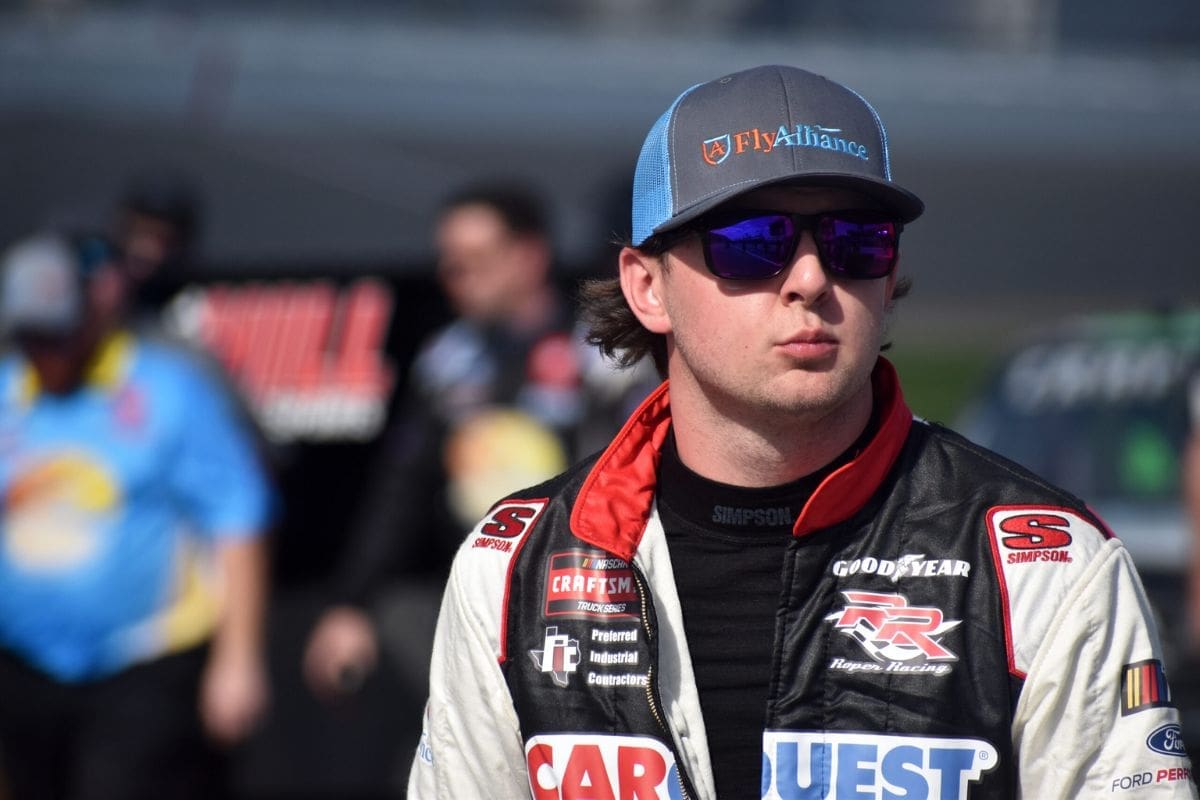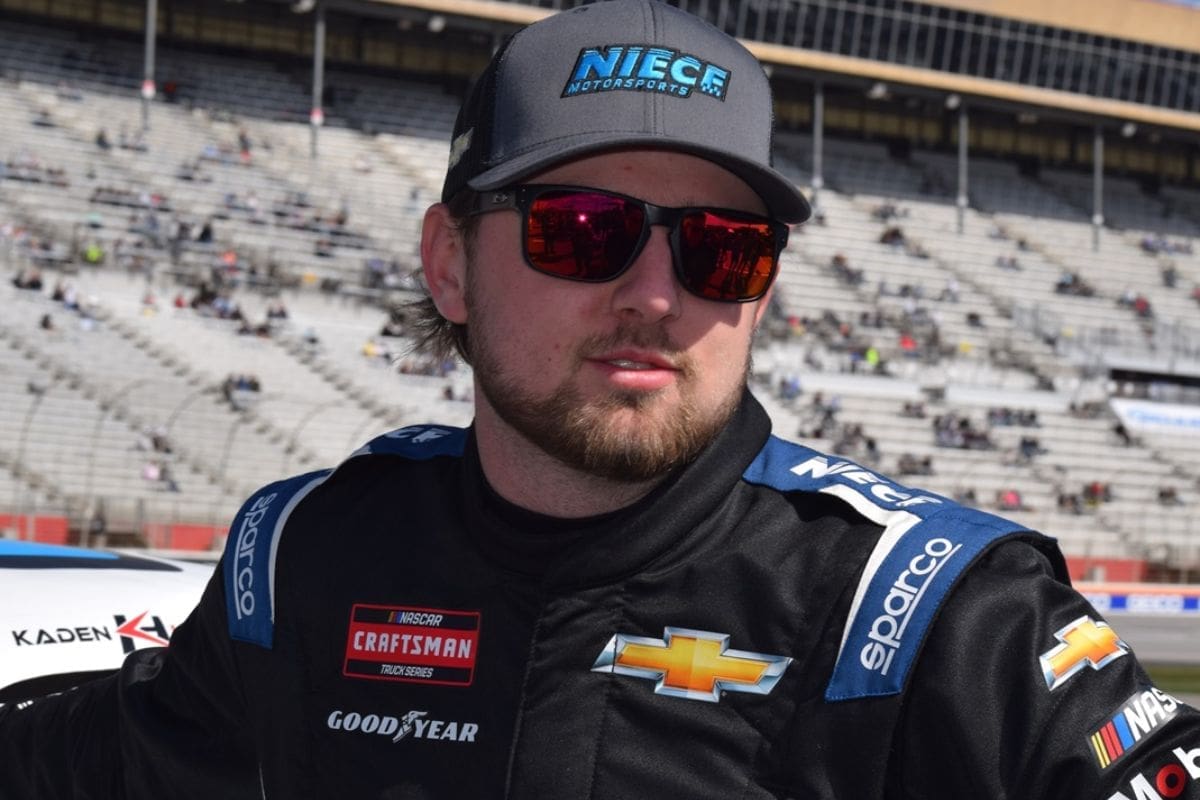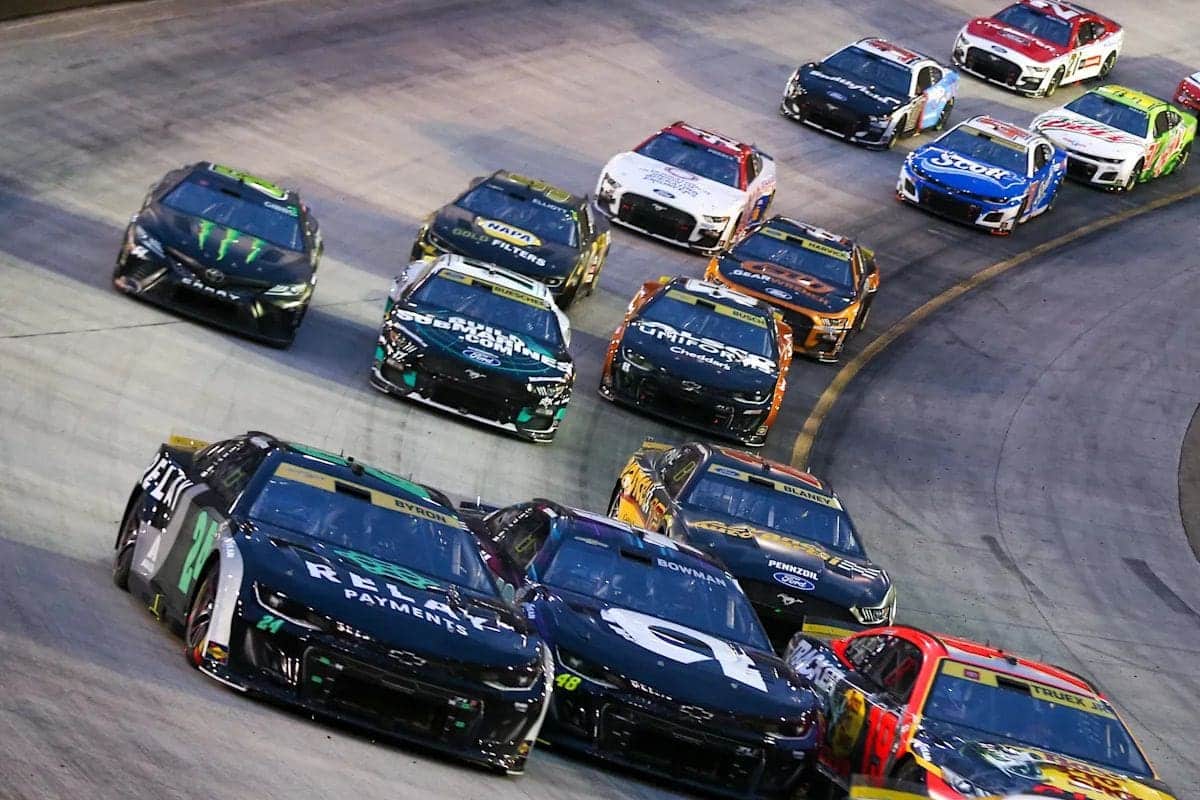Kaden Honeycutt’s Bristol Wreck: The recent incident involving Kaden Honeycutt at the UNOH 200 serves as a striking reminder of the dangerous nature of NASCAR racing, particularly when compounded by critical misjudgments, such as Daniel Dye’s error. This collision curtailed the aspirations of both drivers and raised questions about team strategies and the inherent unpredictability of the sport. Honeycutt’s composed response post-crash highlights the resilience required in such environments. However, the broader implications of this wreck extend beyond individual disappointment, prompting a deeper examination of risk management in racing contexts.
Key Highlights
- Kaden Honeycutt’s wreck at Bristol involved a collision with Daniel Dye, ending both drivers’ races and exemplifying NASCAR’s unpredictability.
- Honeycutt had initially enjoyed a strong season but faced setbacks due to the wreck caused by Dye’s mistake.
- The incident highlighted the impact of minor errors in racing, as Dye’s actions directly affected Honeycutt’s performance and championship standings.
- Both drivers dealt with adverse track conditions, but Honeycutt’s early pit stop and tire issues compounded the challenges from the collision.
- Honeycutt emphasized sportsmanship and resilience, focusing on future races rather than laying blame for the incident on Dye.
Kaden Honeycutt’s Unfortunate Wreck at UNOH 200
Kaden Honeycutt‘s unfortunate wreck at the UNOH 200 serves as a striking reminder of the unpredictability that can derail even the most promising efforts. Honeycutt, piloting the No. 45 truck, entered the race with aspirations of breaking a streak of lackluster finishes. The intense preparation and tireless dedication of his team highlighted their commitment to turning the season around.
However, racing is a capricious endeavor, and on this occasion, fate dealt a cruel hand. The incident that led to Honeycutt’s crash was not an isolated miscalculation but rather a collision of circumstances, especially the misfortunes of fellow competitor Daniel Dye, a playoff driver with championship aspirations. As Dye’s struggles unfolded, he inadvertently influenced Honeycutt’s path, resulting in a dual wreck that extinguished the hopes of both drivers in a single moment.
While Layne Riggs celebrated personal victory, Honeycutt and Dye were left to grapple with the harsh realities of their shared misfortune.
The wreck sums up the essence of NASCAR racing—where one moment of chaos can redefine the narrative of an entire season. Despite the disappointment, Honeycutt’s resilience shines through, showcasing the spirit of competition that permeates the sport.
Kaden Honeycutt’s Reaction to the Crash
Resilience often defines the character of a competitor, and Kaden Honeycutt‘s reaction to his crash at Bristol Motor Speedway exemplifies this trait. Rather than succumb to frustration or anger after the incident, Honeycutt maintained a composed demeanor, reflecting his understanding of the collective effort behind each race. The NASCAR Truck Series is not merely a stage for individual skill; it represents the peak of hard work from a dedicated team.
Despite the setbacks following his strong start to the season, Honeycutt’s focus remained on acknowledging the contributions of Niece Motorsports rather than dwelling on misfortune. His initial success, marked by four top-ten finishes in five races, demonstrated his potential and the promise of a competitive season.
However, the subsequent downturn, punctuated by finishes that did not meet expectations, tested his resolve. Nonetheless, Honeycutt’s reaction to the crash was not one of bitterness, but rather a reflection of his character. He recognized that the unpredictable nature of racing includes moments of adversity that are often beyond a driver’s control.
Honeycutt’s Post-Race Comments on Dye’s Mistake
Kaden Honeycutt’s measured response to the incident involving Daniel Dye highlights his maturity as a competitor in the NASCAR Truck Series. Following a turbulent race at Bristol, where an untimely tire cut by Dye sent Honeycutt’s No. 45 machine into a damaging spin, the young driver chose a path of calm reflection rather than blame. His post-race comments reveal a depth of understanding about the unpredictable nature of racing and the complexities involved in high-stakes competition.
In his interview, Honeycutt expressed sympathy for Dye’s predicament, noting, “He came up on me so fast, and I knew he was trying to get out of the way.” This acknowledgment of Dye’s intentions demonstrates a subtle perspective; Honeycutt recognizes that mistakes can happen in the heat of the moment, particularly on a challenging track like Bristol.
“I talked to Daniel about it. You know it really s–ks – we were at Bristol and just always something happening here. He came up on me so fast, and I knew he was trying to get out of the way. I hated that it was us.”
Kaden Honeycutt says he knows Daniel Dye was trying to get out of the way
He's frustrated because he wants people to knows he's racing for the owners championship and that has real stakes too pic.twitter.com/IYQUnU8RhK
— Matt Weaver (@MattWeaverRA) September 20, 2024
His focus on the circumstances rather than personal grievance demonstrates a professional ethos that prioritizes the integrity of the sport over individual frustration.
Moreover, Honeycutt’s remark, “I hated that it was us,” emphasizes his disappointment not merely in the incident itself but in the broader implications for both drivers. By refraining from assigning blame, he fosters a culture of sportsmanship, reminding fans and peers similarly that racing is as much about fellowship as it is about competition.
Niece Motorsports’ Disappointment and Strategy
Niece Motorsports faced a challenging setback at Bristol, as their aspirations for a strong performance were thwarted not only by Daniel Dye’s unfortunate tire incident but also by NASCAR’s decision to penalize the team for oil spills on the track. This dual setback highlighted the unpredictable nature of motorsport, where a singular event can cascade into a series of complications, greatly altering team strategy and outcomes.
Kaden Honeycutt, who boasted a commendable 16.7 average finish at Bristol, found himself in a position of urgency following the race. His acknowledgment of the team’s potential was evident as he expressed regret over the early pit stop that contributed to their misfortunes.
“I hate that I spent it on the initial pit stop, really that was my fault,” he reflected, emphasizing the interplay between driver decisions and team performance.
“I mean, these guys had a really good truck. I hate that I spent it on the first pit stop, really that was my fault.”
“Unfortunately, I have to go to Kansas, and we are in a must-win spot. So we’ll try to do that and get ourselves in the owners’ playoffs for round 2.” – Honeycutt
Looking ahead, Honeycutt recognized the need for immediate action. With Kansas on the horizon and the stress mounting to secure a position in the owners’ playoffs, Niece Motorsports‘ strategy must pivot towards a must-win mentality.
The team’s focus will now shift to optimizing their performance in the next race, employing data-driven approaches and refining pit strategies to avoid previous mistakes.
Comparison to 2022 Bristol Race and Track Conditions
The challenges faced by Honeycutt at Bristol this year sharply differentiate from his performance in the 2022 race, where he managed a respectable 13th-place finish despite more adverse track conditions.
The 2022 Bristol race highlighted a more forgiving asphalt surface, allowing drivers to maintain tire performance longer, while this year’s event was blemished by the complications of PJ1 traction compound and Goodyear’s experimental tires.
Key differences in track conditions can be summarized as follows:
- Tire Degradation: In 2022, drivers experienced minimal tire fall-off, enabling consistent lap times. This year, rapid degradation hampered tactical planning and performance.
- Track Surface: The absence of the PJ1-injected track in 2022 allowed for a more stable racing environment. The current year’s compound introduced an unpredictable element, complicating handling and traction.
- Performance Variability: Honeycutt’s 2022 finish reflected not only his skill but also the ability of his team, On Point Motorsports, to navigate the less challenging conditions.
“I was able to pass quite a few trucks with it; I just needed a little more right-front turn coming off the corner. Either way, though, it was really hard to pass all night.”
“The tires just were not falling off, so the whole night came down to make-or-break strategy (calls), and it happened that we stuck with the strategy we planned from the get-go. Unfortunately, it didn’t work out as well as it could have, but I’m so proud of all my guys for all their hard work and effort. We busted off (pit) stops that were faster than some of the A- and B-teams … and that’s something that we can really build on for the future.” – Honeycutt
While Kaden Honeycutt displayed resilience amid these recent tribulations, it is evident that the evolving nature of track conditions and tire strategies in NASCAR is a critical factor in a driver’s success.
The contrast of these two races serves as a reminder of how quickly fortunes can change in motorsport, emphasizing the need for adaptability and precision in strategy.
News in Brief: Kaden Honeycutt’s Bristol Wreck
The wreck involving Kaden Honeycutt at Bristol serves as a striking reminder of the inherent unpredictability within NASCAR racing. Daniel Dye’s error not only ended both drivers’ aspirations for a strong finish but also highlighted the critical importance of tactical planning and adaptability in competitive motorsports. As teams reflect on this incident, it emphasizes the necessity for continual assessment of race conditions and driver performance, ultimately shaping future approaches to mitigate similar occurrences in racing environments.
ALSO READ: Kaden Honeycutt Avoids Blaming Team for Pit Road Errors



